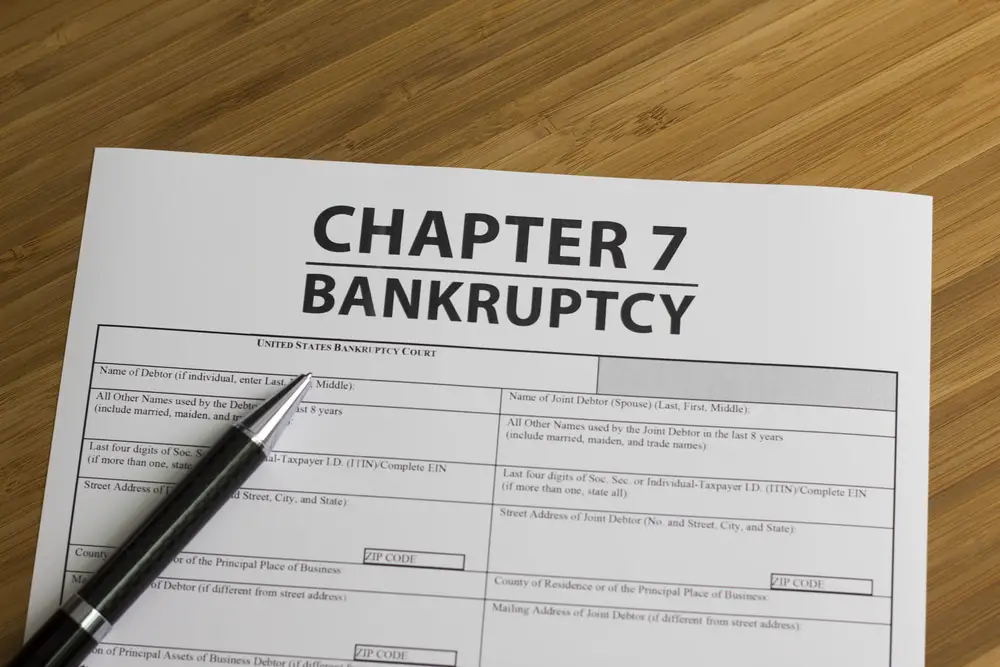With healthcare costs on the rise during this COVID-19 pandemic, it can feel overwhelming to stay on top of medical bills. If you are considering bankruptcy to absolve your medical debt, you are not alone. Outstanding healthcare costs are a significant component in many bankruptcies.
Some studies show that significant medical debt is evident in roughly 62.1% of personal bankruptcies. It is an effective way to discharge your debts and obtain a fresh start financially.
However, you should take some factors into consideration before making your decision, such as your options for bankruptcy and its impact on your credit and healthcare in the long run.
Basics of “Medical Bankruptcy”
“Medical bankruptcy” is not an official term or bankruptcy category, but most people think of it as a way to discharge, or do away with, immense hospital and doctor bills.
“Medical bankruptcy” is not an official term or bankruptcy category, but most people think of it as a way to discharge, or do away with, immense hospital and doctor bills. It can also include the loss of time and income when you take off work to heal after an accident or illness. A lack of insurance coverage or overwhelming medical insurance premiums can add up quickly, especially for larger families.
When you file for bankruptcy, you cannot limit your case to medical bills alone. You are required to list all of your outstanding debts, including medical bills. From there, your debts fall into three different categories.
The first is secured debts, where the borrower puts up an asset as collateral for their loan. If the loan fails to be repaid according to the initial agreement, the borrower can sell their collateral to repay their debt. Otherwise, the bank can seize the asset, sell it, and pay back the debt. Mortgages and car loans make up two of the most common secured debts.
The next type is priority debts, which are often government or court-ordered obligations such as taxes, child support, and alimony.
The last type of debt is unsecured debt, consisting of medical care, old utility bills, credit cards, personal loans, and borrowed money from others.
If your bankruptcy results in a discharge, no matter how much debt you may have accumulated, any of the bills that you incurred before filing will not need to be paid back.
Different Types of Bankruptcy
Two types of personal bankruptcies that can absolve your medical debt are Chapter 7 and Chapter 13. Choosing the right bankruptcy type to file is crucial in order to manage your unpaid bills and find debt relief.
Chapter 7 Bankruptcy

As a liquidation bankruptcy, Chapter 7 is typically effective for candidates who have mostly unsecured debts that exceed their income. The process for this type of bankruptcy lasts between four to six months. Subsequently, all of your secured and unsecured debts will be completely discharged.
All debts cannot be fully discharged under Chapter 7 bankruptcy, such as most student loans, recent tax debts, child support fees, and alimony. Any cosigners will also not be protected by your personal bankruptcy.
In order to keep your property in this type of case, you must make an exemption claim. Each state has their own list of exemptions with properties and the maximum values you can claim. Luckily, people are rarely forced to relinquish their properties even after declaring bankruptcy. Filers in more than 90% of all consumer bankruptcy cases are able to keep all of their property.
However, many people are not able to qualify for Chapter 7 bankruptcies. Since Congress made changes to the bankruptcy law in 2005, it has become more difficult to file for this type of liquidation. Your family’s total income and expenses will first go through a means test. If your expenses and income are less than your state’s median, you will most likely qualify. Chapter 7 bankruptcies can be filed once every eight years.
Chapter 13 Bankruptcy
Chapter 13 is for those who have the means to pay back some of their debts. In essence, you create a repayment plan that can last between three to five years. It is also known as a wage earner’s plan because those who tend to file for this type have enough disposable income.
Though it may not sound like a full bankruptcy, your monthly payment is calculated based on your debts and disposable income. Medical creditors are partially repaid according to this plan. Any debt that is left at the conclusion of the repayment plan is discharged. However, you will be required to use your disposable income in order to make larger payments.
Impact on Credit
Your credit will inevitably take a hit when you decide to declare bankruptcy. Higher credit scores often drop more than lower scores, though the exact effects will vary. According to FICO, the top-scoring model, filing for bankruptcy can bring a score of 700 or above down by at least 200 points. If your score is around 680 or less, you can lose between 130 to 150 points.
The number of debts and the amount that is discharged also impacts your credit score. Factors such as the ratio of positive accounts to negative ones and the amount of debt you have accrued make a small difference in your score. Regardless, your score will show a significant drop. However, the impact does lessen over time.
Chapter 7 bankruptcies will affect your credit report for up to ten years. However, the debt you discharge may disappear from your report sooner, because most negative accounts no longer show up on your statement about seven years after any final payment or activity.
Chapter 13 bankruptcies will be reported for up to seven years, but some debts will continue to show up on your report even after the bankruptcy drops off because of the three to five year repayment time frame. It is only after the bankruptcy account becomes inactive that the seven-year period begins.
Impact on Healthcare Services
Hospitals cannot refuse to treat patients who are unable to pay, according to the 1986 Emergency Medical Treatment and Active Labor Act, but filing for bankruptcy to discharge medical debt can affect your relationship with your doctors and certain healthcare providers.
If your medical debt is discharged through bankruptcy, your primary doctor may refuse future services. More prominent hospitals are less likely to take this drastic measure, but smaller providers that are affected—such as dentists or clinics—are more risk-averse and may cease their services. Chapter 13 bankruptcies may help you maintain a better relationship with your medical provider because you will be making monthly payments.
First Steps to File
After deciding to file for bankruptcy, the first step is to determine whether you are eligible by conducting some research and talking to a credit counselor through an agency that is approved by the Department of Justice.
After talking with your credit counselor and determining that you are eligible to file for bankruptcy, you can take these first steps to get started on the process:
1. Complete the bankruptcy forms.
There are at least 23 separate forms that add up to around 70 pages that you need to fill out. You will be required to list all of your real estate, debts, and personal property. You will also need to provide every detail of your financial life, such as your last debt payments, family income, every family expense, and your latest property sales or transfers.
2. Get Your Filing Fee
The federal court charges a $335 filing fee for new Chapter 7 petitions or a $310 fee Chapter 13 petitions. You can either pay this fee in full in person, through monthly installments or apply for a fee waiver. To qualify for the waiver, your total household income must be under 150% of the federal poverty line, which is calculated after you file your bankruptcy petition.
3. File Your Bankruptcy Forms in Court
All you need to file at your local courthouse are your bankruptcy forms and the filing fee. You won’t submit bank statements and tax returns to the court. You will send these documents later to the trustee that the court assigns to you after filing your case.
4. Mail Documents to Your Trustee
After your case is filed, the trustee assigned to you will send you a letter asking you to send them certain financial documents. These can include tax returns, pay stubs, and bank statements. You must mail these promptly according to their instructions in the letter.
It is important to notify your trustee, or creditor, of any potential medical debt at the time you file, even if you do not know how much the bill will be or how much insurance will cover. Otherwise, if you attempt to claim the medical bill after filing bankruptcy, you may still be required to pay the full amount, because the creditor was not given notice in advance.
Medical bankruptcy can be an effective way to liquidate your medical bills, but it is imperative to examine all of your options first and the inevitable consequences. Ultimately, talking to a credit counselor is the most effective way to start getting your finances back on track.
